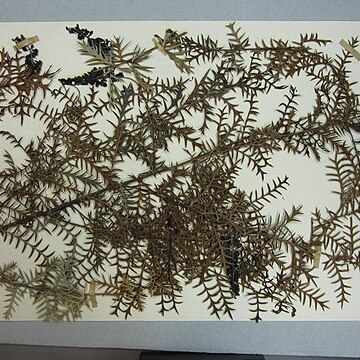A small shrub 1-2 m high. The branches spread and arch over. The leaves are stiff and prickly. The are dull green on top and whitish underneath. The blade is 1.6-6 cm long and 1.5-2.5 cm wide. The shape varies. They can be entire with teeth around the edge or deeply divided into lobes. The flowers are orange-red. The style sticks out. They are about 1.5-2 cm long and arranged along stalks 4-6 cm long. These are near the ends of branches. The fruit are woody follicles. These are 1.5-2 cm long by 0.6 cm wide. They are brown when ripe and contain 2 seeds.


